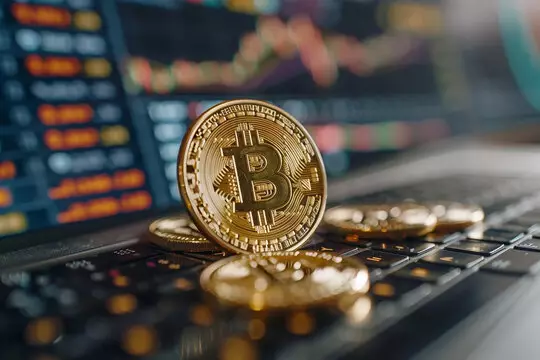In the world of cryptocurrency, particularly with Bitcoin, the prevailing narrative often leans towards optimism. Enthusiasts and pundits alike have a tendency to interpret every dip as a buying opportunity, citing oversold conditions as a signal for potential price rebounds. However, a deeper analysis sheds a rather bleak light on this perception. The recent commentary by analyst Dr. Cat, who declared the current oversold situation as “super-bearish,” raises alarm bells rather than hope. He argues that merely accessing oversold levels doesn’t imply immediate bullishness; rather, it reflects a prevailing market panic among investors desperately selling off their holdings. This contradiction reveals a fundamental misunderstanding of market dynamics, illustrating that an oversold indicator can just as easily indicate a loss of faith in a digital asset, which many seem unwilling to confront.
The Reality of Investor Behavior
Dr. Cat’s analysis indicates that while oscillators like the Relative Strength Index (RSI) are mathematically constrained to specific values, the price of Bitcoin is not limited in the same manner. Simply put, the oscillator numbers may suggest a warning, but the market can indeed continue to decline. This is further exacerbated when whales or large holders of Bitcoin begin to offload their assets, as noted by analyst Ali Martinez. The fact that over 29,000 BTC have been sold off by these major stakeholders since April underscores a concerning trend—where those with significant influence in the market are opting for profits rather than riding the waves of uncertainty. It’s less about the individual trader’s sentiment and more about the signals coming from the top.
Quantitative Easing, Quantitative Selling
Given that CryptoQuant’s CEO, Ki Young Ju, highlighted the lack of demand overshadowing supply, we are led to question the sustainability of Bitcoin’s current price levels. With supply far exceeding demand, one must wonder: What’s next? For potential investors looking for a home run, these indicators serve as glaringly ominous warnings. As with any market, balance is key, and at present, Bitcoin finds itself dangerously on the side of oversupply. Such conditions often lead to prolonged bearish sentiment, challenging the notion that oversold equals opportunity.
Bear Markets vs. Bull Markets
The broader implications of trading during different market phases cannot be overstated. Dr. Cat’s observation on the differentiation between oversold conditions in bull versus bear markets reflects a crucial piece of knowledge that novice investors frequently overlook. While oversold conditions might indicate a potential for consolidating gains in a bull market, such scenarios are often mere pauses in a downtrend during a bear market. Therefore, buying into these dips may not yield the desirable outcome that many anticipate. Each significant rally tends to take longer to recover in a bear market, leaving holders vulnerable to further downturns when they believed they were seizing a golden opportunity.
Historical Context: Learning From the Past
Examining historical patterns in Bitcoin trading alongside Dr. Cat’s insights further amplifies the discussion on market sentiment. Over the past year, we’ve observed that external factors and prevailing market dynamics heavily influence Bitcoin’s fate. Such analyses encourage a sobering perspective: each major dip in the crypto realm offers less in terms of immediate recovery potential and more as a learning experience on market psychology. Understanding these historical pretexts not only grounds today’s trading decisions but introduces minor securities about the future, illustrating that past performance is crucial to deciphering current bearish signals.
Confronting Crypto Misconceptions
Fed by a cacophony of optimistic voices, misinformation can run rampant across the digital space. The illusions of easy gains blur reality, fostering an environment where even professionals fall prey to bullish narratives. So when Dr. Cat states emphatically that misadvised bullishness surrounding oversold levels arises from a fundamental lack of understanding, one must heed this warning. It’s crucial that investors—whether seasoned or new—approach the Bitcoin market with both open minds and analytical rigor, rather than chasing after every fleeting signal of optimism.
The sentiment among crypto analysts today heralds a ripple of caution. The oversold narrative, while tantalizing to short-term traders, misses vital nuances of market dynamics and investor behavior. As we traverse the murky waters of Bitcoin’s future, it may very well pay to be skeptical rather than hopeful. Such a mindset could protect investors from unwarranted losses amidst the chaos of a market governed by panic and precipitated selling pressure.

